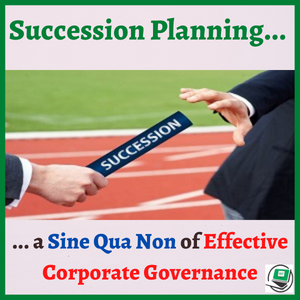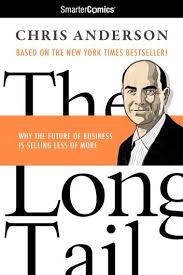 |
Succession Planning - a Sine Qua Non of Effective Corporate Governance |
Business succession planning is the process of deciding who will take over your business in the future when you retire or the unexpected happens. This process is still relevant for smaller, family-run businesses to make sure the business can continue to run smoothly. I discovered that in Nigeria, not much thoughts are given to this. All that the business owner wants is immediate success without considering the issue of succession. Yet, success without successor is suicide.
In Nigeria, you cannot find an indigenous company of one hundred years old. The oldest we found is Wema Bank now 68 years. Airport Hotel just celebrated eighty years. On researching into the root of the organization, we found out it was established by a Briton.
Few years ago, I asked the richest man in Africa, that after you, what next, he couldn’t answer the question. He said his group Managing Director will answer my question. He did, but I wasn’t satisfied with the answer. Up till this day, the question is still begging for an answer.
The term succession planning refers to a business strategy companies adopt to pass leadership roles down to another employee or group of employees. Succession planning ensures that businesses continue to run smoothly and without interruption, after important people move on to new opportunities, retire, or pass away. In most case in Nigeria, the business passes away as soon as the business owner passes away. Businesses, however can also provide a liquidity, which enables the transfer of ownership in a going concern to a prepared successor among the employees. Succession planning is a good way for companies to ensure that businesses are fully prepared to promote and advance all employees—not just those who are at the management or executive levels. This criterial is critical namely, buy-in, ownership and sustainability. Without the former, there can never be latter.
Key Issues in Succession Governance
- Succession planning is a business strategy for passing leadership roles on to one or more other employees.
- The strategy is used to ensure that businesses run smoothly after employees retire and leave the company.
- Succession planning involves cross-training employees to help them develop skills, knowledge, and an understanding of the business.
- Plans can be long-term, which are meant to account for future changes, or for emergencies whenever anything unexpected arises.
- There are many benefits to succession planning, including inclusivity if companies have a strong plan to diversify their workforce.
Rudiments Of Succession Planning
Succession planning is a contingency plan. It is not a one-time event. Rather, it should be reevaluated and updated each year or as changes dictate within the company. As such, it evaluates each leader’s skills, identifying potential replacements within and outside the company and, in the case of internal replacements, training those employees so they’re prepared to assume control.
In large companies, the board of directors typically oversees succession planning in addition to the chief executive officer (CEO), and it affects owners, employees, as well as shareholders. A larger business may train mid-level employees to one day take over higher-level positions. For small businesses and family-owned companies, succession planning often means training the next generation to take over the business.
The process takes a lot of time and effort. As such, it requires:
- Recruitment or Proper Hiring: The goal is to choose candidates who are capable of rising through the ranks in the future. For example, an experienced person from another company might be courted and groomed for a higher position.
- Training: This includes the development of skills, company knowledge, and certifications. The training might include having employees cross-train and shadow various positions or jobs in all the major departments. This process can help the person become well-rounded and understand the business on a granular level. Also, the cross-training process can help identify the employees that are not up to the task of developing multiple skill sets needed to run the company.
Businesses may want to create more than one type of succession plan. An emergency succession plan is put in place when a key leader needs to be replaced unexpectedly. A long-term succession plan, on the other hand, helps the company account for anticipated changes in leadership.
In all the cases, succession planning involves preparation rather than pre-selection. This means that those responsible must identify the skills, practices, and knowledge.
For business organization, if one partner dies at a time when the surviving partner would not otherwise have enough cash to buy the deceased partner’s ownership share, the life insurance proceeds make that purchase possible or h/she may raise fund in any available sources.
Benefits of Succession Planning
There are several advantages for both employers and employees to having a formalized succession plan in place:
- Employees know that there is a chance for advancement and possibly ownership, which can lead to more empowerment and higher job satisfaction.
- Knowing there is a plan for future opportunities reinforces employees' career development.
- Management's commitment to succession planning means that supervisors will mentor employees to transfer knowledge and expertise.
- Management keeps better track of the value of employees so positions can be filled internally when opportunities arise.
- Leadership and employees are better able to share company values and vision.
- A new generation of leaders is needed when there's a mass exodus of people from the workforce into retirement.
- Proper succession planning benefits shareholders of public companies, especially when the next candidate for CEO is involved in business operations and is well respected years before the current CEO retires. Also, if investors observe a well-communicated succession plan, they won't sell the company's stock when the CEO retires.
Workings Of Succession
Succession planning is used by businesses to streamline the process involving a change of leadership or ownership. It involves recognizing internal employees who merit career advancement and training them to assume new roles within the company. These plans only work if companies take the steps necessary to prepare. Plans are often long-term to prepare for inevitable changes in the future. Emergency plans can be set in place to account for unexpected changes. On the other hand, business owner can prepare a particular person, not necessarily his/her child, who has the ASK mentality (ATTITUDE, SKILL AND KNOWLEDGE) and hand over to him/her, at a certain time, in the life time of business owner and see how the business will be run with wise oversight.
Business Succession Planning And Governance
Succession planning requires careful organization and (as the name suggests) planning. Companies may miss opportunities or make missteps if they can't communicate their vision with employees, don't adopt a formal agreement or plan (including a shortlist of candidates and conducting regular reviews of positions and employees), assume their talent has the skills and knowledge to advance and succeed, fail to use succession plans for all employees, and ignore the need to diversify their talent pool.
According to the 2021 Global Leadership Forecast companies around the world are facing a leadership crisis. In fact, only 11% of surveyed organisations reported that they have a “strong” or “very strong” leadership bench, the lowest rating in the past 10 years (it has been in decline since 2011’s reported 18%). This drop has been attributed to a decline in leadership in development and transition training in organizations.
Understandable given the distractions the world has had over the past couple of years.
Nonetheless, this figure shows just how important it is for organizations to work on their succession management strategies. This is the most effective way to ensure that the leaders of the future have the right blend of skill and experience to guide them to success. And this is what business succession planning is all about.
Here are seven tips for kick-starting the succession planning process at your company.
1. Be proactive with a plan
First, consider all the key roles on your team and answer these two questions:
- What’s the day-to-day impact of X position on our company or department?
- If the person currently in X position left, how would that affect our operations?
2. Pinpoint succession candidates
Ask yourself:
- If we were to hire for X position internally, which employees would be the strongest candidates for stepping into this role?
- Would those candidates need training? And, if so, what type?
3. Let them know
In private meetings, explain to each protege that they’re being singled out for positions of increasing importance.
4. Step up professional development efforts
Connecting them with mentors can boost their abilities in the critical area of soft skills: The best leaders have strong communication skills, as well as polished interpersonal abilities, such as empathy and diplomacy.
5. Do a trial run of your succession plan
Don’t wait until there’s a crisis to test whether an employee has the right stuff to assume a more advanced role. Have a potential successor assume some responsibilities and view wisely how he/she performs.
6. Integrate your succession plan into your hiring strategy
Succession planning starts at hiring stage.
7. Think about your own successor
It’s important to ask yourself, which employee could step into your shoes one day? And what can you do, starting now, to help that person prepare for the transition?
Following are some indigenous businesses in Nigeria that have failed the test of succession governance:
|
EKENE DILICHUKWU CONCORD NEWSPAPER ABIOLA BOOKSHOP JIMOH ODUTOLA INDUSTRIES MAI DERIBE INDUSTRIES OSHINOWO TRANSPORT CHIDIEBERE TRANSPORT OSONDU MOTORS LOBITO ALATA GROUP |
FERDINARD GROUP JIMBAZ INDUSTRIES DANGAZAU SOSOLIZO DADDY HOSPITAL OLOFIN SUPERMARKET STAR PAPER MILL CHANGHAGI AIRLINE STATIONERY STORES IZUCHUKWU TRANSPORT |
Related Articles

|
Gain Report: Nigeria sugar annualReport Highlights: Nigeria continues to depend almost exclusively on sugar imports despite the completion of the privatization of all government-owned sugar estates. Rehabilitation and expansion of these estates are on going, albeit at a very slow pace and at present, only Savannah Sugar Company (Da [Read more]
|
Posted: 16 years ago |

|
The Power of Positive Words, Actions and ReinforcementThe general definition of the term WORD is to say something, name, express, command, order or instruct. ACTIONS simply put is how we act, react, operate or the effort we put in to do something. REINFORCEMENT could be summarised as what helps to build up or increase anything.
How d [Read more]
|
Posted: 13 years ago |

|
The Long Tail: Forget Squeezing Millions from a few Megabits at the Top of the Charts...In 1988, a British mountain climber named Joe Simpson wrote a book called Touching the Void, a harrowing account of near death in the Peruvian Andes. It got good reviews but, only a modest success it was soon forgotten. Then, a decade later, a strange thing happened. Jon Krakauer wrote Into Thin Air [Read more]
|
Posted: 16 years ago |


